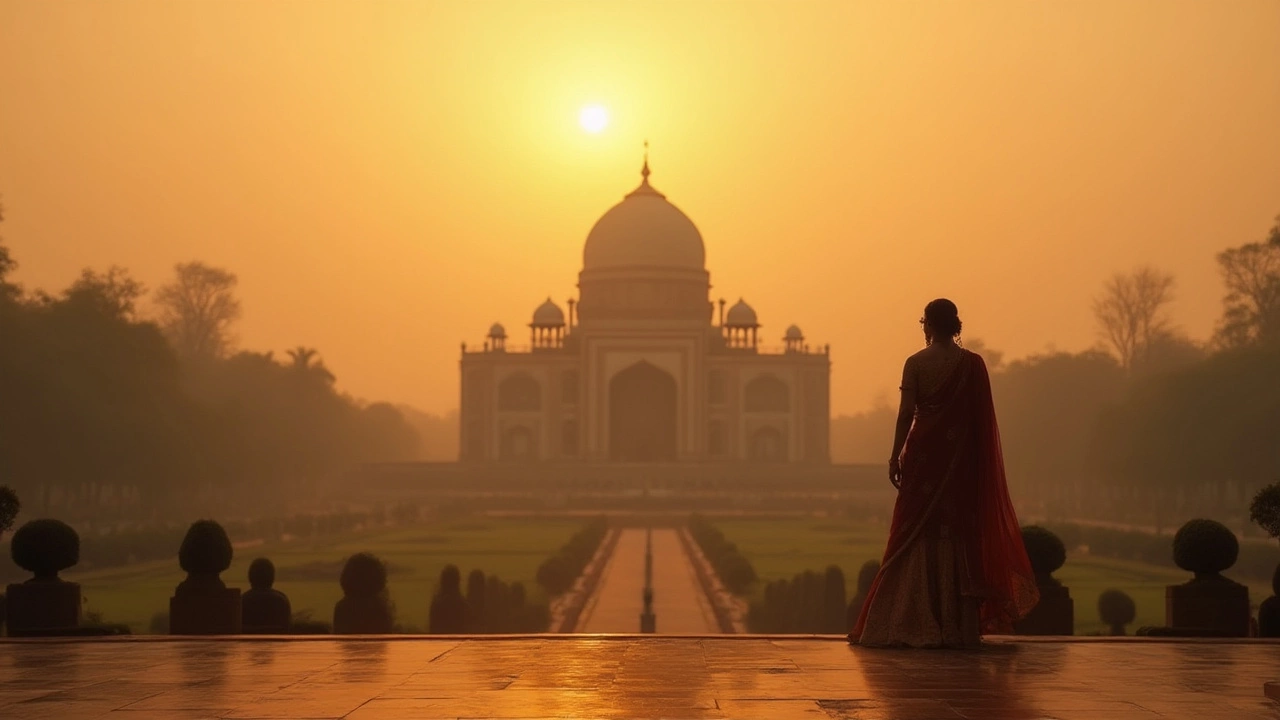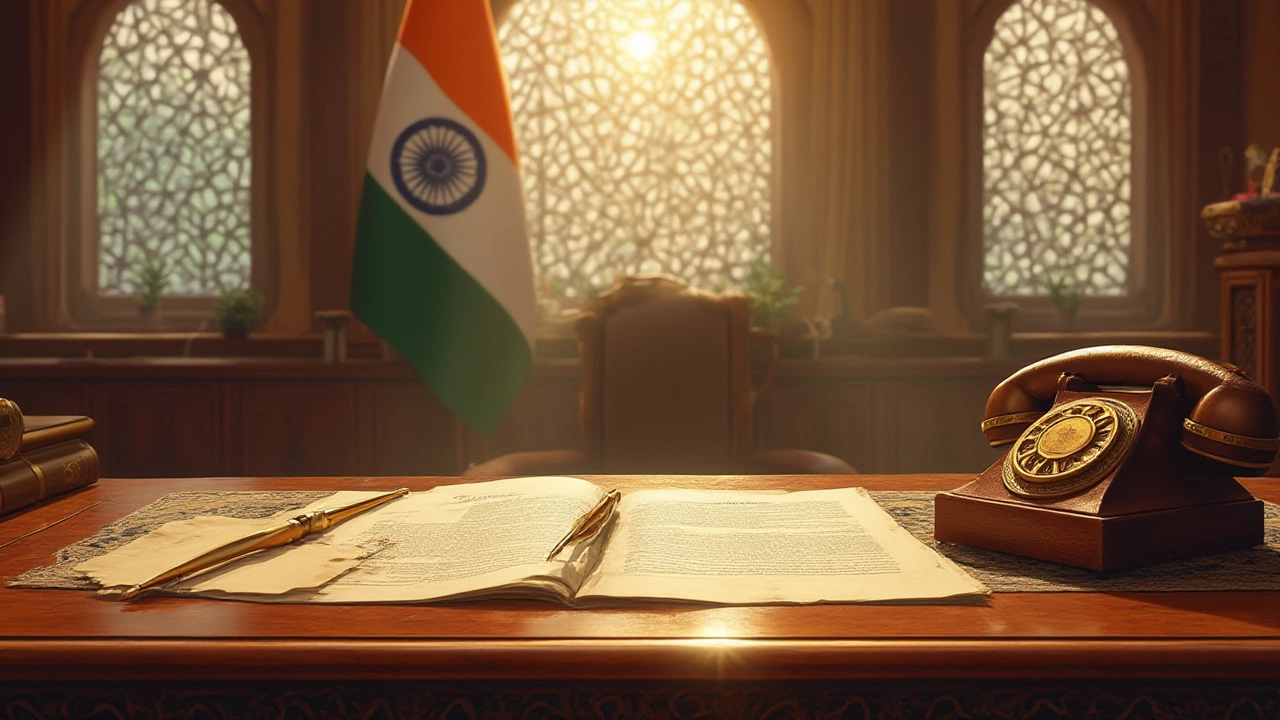What is the Most Powerful Post in India? Understanding the Top Authority

Who really holds the reins in India? If you've ever caught snippets of political debates, you’ll know it's a question hotly discussed at family dinners, buzzing in classrooms, and lighting up WhatsApp forwards just about every election season. The answer isn’t as simple as naming a job title. India's power structure is a web, and when you start pulling at the threads—President, Prime Minister, Chief Justice, Chief Minister—the picture that emerges is both complex and surprisingly logical. This isn't just about who gets the biggest house or the flashiest motorcade; it’s about how the country actually runs, who calls the shots, and what happens behind those manicured gates in Delhi.
The Battle of Titles: Who Gets the Crown?
Let’s cut straight to the chase: the Prime Minister’s post is widely considered the most powerful in India. But wait, isn’t the President technically the head of state? Sure, according to the Constitution, the President sits at the top. But the President’s role is mostly ceremonial. Think of the President as the umpire in cricket—there to ensure the rules are followed, but not smashing sixes themselves. The Prime Minister, on the other hand, is like the team captain, calling the shots, setting the field, and hogging the camera when it matters. According to Article 74 of the Indian Constitution, all executive decisions rest with the Council of Ministers headed by the PM, put simply: the PM runs the government.
Take Indira Gandhi for example. During her tenure, she wielded enough authority to change the course of Indian politics—declaring an Emergency in 1975 that let her rule by decree for 21 months. Or Narendra Modi, who in recent years, has left a distinct stamp on domestic and international policy, from the BJP’s consolidation across states to 2016’s sudden demonetization that affected every wallet in India. The sheer scope of control is significant when you realize that the PM isn’t just the leader of the Lok Sabha—he or she is also the chief architect of the Cabinet’s direction, appointment of ministers, and top foreign policy moves.
But there’s a twist. The President appoints the Prime Minister. So technically, the President could play kingmaker. But in practice, that’s rare. The President usually invites the leader of the party with the most seats in the Lok Sabha to form the government. It’s a ritual that happens after every general election, but the real game begins once the PM takes charge.
The Chief Justice of India and the Chief Ministers of states also wield immense power in their own spheres. The Chief Justice can review and strike down laws (and has done so, like in 2018 when the Supreme Court scrapped Section 377). Chief Ministers wield money and control in their respective states, especially in sprawling states like Uttar Pradesh or Maharashtra. Still, the national stage belongs to the PM.
Here’s a quick hit list of Indian power posts:
- Prime Minister of India (Head of Government, holds real executive authority)
- President of India (Ceremonial Head of State, approves laws, commander of armed forces but acts mainly on PM’s advice)
- Chief Justice of India (Judicial review over government actions, interpretation of the Constitution)
- Chief Ministers (Real power within their states, not the whole nation)
How Power Actually Works: The System Explored
Let’s break it down with an example: Parliament passes a bill, say, on new agricultural reforms. The bill is debated, tweaked, and voted on by MPs. But here’s the kicker—the real decision usually hatches behind closed doors in Cabinet meetings presided over by the Prime Minister. The Council of Ministers can have up to 60 members, but the core "inner circle"—the Cabinet Committee on Security, for instance—calls the crucial shots. The PM’s word is almost always final in these groups.
Once the bill passes both Houses (Lok Sabha and Rajya Sabha), it goes to the President, who must sign it. Can the President refuse? Theoretically, yes, but in practice, they almost never do. If the President sends it back with suggestions (which is rare), Parliament can lob it right back unchanged, and then the President must sign. That’s the dance. The President is also the commander-in-chief of the armed forces, but again, all orders pass through the Ministry of Defence, which reports to the PM.
What about states? Here’s where Chief Ministers muscle in. Each state has its legislature and government. When Delhi and the central government clash—on police control, for instance—it’s the PM who generally resolves the standoff. The court sometimes steps in too: the judiciary acts as referee in major disputes, sometimes overruling both Parliament and the PM by declaring a law unconstitutional. Power is balanced, but the Prime Minister usually keeps the upper hand.
Now let’s toss in the Chief Justice. The Supreme Court can overturn laws or government policies, as it did with the 2018 Aadhaar verdict, setting boundaries for privacy. Indian democracy splits power among these three pillars—executive (PM), legislature (Parliament), and judiciary (Supreme Court)—but the executive, led by the PM, is the undisputed leader in day-to-day governance.
| Position | Key Power | Selection |
|---|---|---|
| Prime Minister | Runs government, picks ministers, shapes policy | Appointed by President, needs Lok Sabha majority |
| President | Signs laws, approves Cabinet, ceremonial duties | Elected by MPs/MLAs |
| Chief Justice | Leads Supreme Court, interprets Constitution | Appointed by President |
| Chief Minister | Runs state government, budgets, police | Appointed by Governor, needs Assembly majority |
Don’t be fooled by fancy terms or pageantry. That press conference you see beaming across TV screens? That’s the PM setting the stage for what happens next across the whole country.

Perks, Pitfalls, and Real-Life Examples
The perks of being India’s Prime Minister? They’re hard to beat. There’s the official residence at 7 Lok Kalyan Marg in New Delhi, a staff of hundreds, the fleet of bulletproof BMWs and Range Rovers, Air India One jet for travel, Z+ security, and private chefs. The PM's office has its own war room, intelligence briefings, situation reports from every corner of India—they see it all, first and fast. The power to appoint and sack cabinet ministers sits squarely with one person. A single PM’s mood can tilt the scales for a nation of 1.4 billion.
But it’s not all smooth. Every decision is scrutinized—opposition parties, media, and the courts keep the PM on a tight leash. Remember when Dr. Manmohan Singh was called a "silent PM" by critics? Or when Rajiv Gandhi’s government faced protests over the postal bill in 1986? Indian democracy likes to test its top officeholder, and scandals stick like glue. The 2G spectrum case, the Bofors scam, the Citizen Amendment Act protests—few PMs leave the post untouched by controversy.
Despite this, the clout remains intact. For example, the PM recommends appointments for the Election Commission, the Army Chief, and judges (albeit subject to some court oversight since the 1990s). In foreign affairs, the PM’s word is tantamount to national policy—whether it's a surprise stopover in Pakistan or pushing climate deals in Paris. Every budget bears the indelible stamp of the PM’s signature priorities, whether it’s rural spending, infrastructure boom, or digital tech reform.
The President, meanwhile, has the power to declare a national emergency—but only with the Cabinet’s written request. The Chief Justice can single-handedly unravel laws, but cannot order public spending. Every power post is mighty, but the PM’s role stands tallest for sheer influence.
Here’s a quick glance at official perks for the top posts:
| Perk | Prime Minister | President |
|---|---|---|
| Official Residence | 7, Lok Kalyan Marg | Rashtrapati Bhavan |
| Salary (monthly) | ₹2,80,000+ | ₹5,00,000+ |
| Official Cars | BMW 7 Series, bulletproof fleet | Mercedes S600 Pullman Guard |
| Travel | Air India One | Air India One |
| Z+ Security | Yes | Yes |
| Staff | PMO staff, advisors | Administrative, secretarial |
If you’re after raw, day-to-day power, the PM wins every round.
How to Get There: Climbing the Ladder to Top Power in India
So how does someone rise all the way to the top? There’s no one-size-fits-all route to becoming India’s Prime Minister, but a typical path has some common stepping stones. Start in grassroots politics—student unions, party youth wings, or volunteering for a political campaign. Next, you’ll want to stand for election, often starting as a local councillor or member of the legislative assembly (MLA). Success there may open the door to contesting for Parliament—in the Lok Sabha (the lower house)—where real action unfolds. Party connections, networking, and a knack for public speaking go a long way. Leadership roles within the party—like party president or senior positions—are practically required.
The Lok Sabha general elections, held every five years, are the main battlefield. If your party wins a majority, and you’re the party’s recognized leader, the President will likely invite you to become Prime Minister. For example, Rajiv Gandhi entered Parliament in 1981 and was Prime Minister within four years after his mother’s death. Narendra Modi went from being a grassroots party worker, to the Chief Minister of Gujarat, to India’s PM in 2014, showing that regional success can be a launchpad for the big chair.
Tips if you’re serious about chasing this path:
- Get involved in student politics—many top leaders once headed their university unions.
- Choose a political party and work your way up through the ranks. Loyalty and visible results count for more than you’d think.
- Become an MLA and build influence in your state—states are power centers and a training ground for national politics.
- Win a seat in the Lok Sabha—this is a must for any PM aspirant.
- Hide nothing—the higher you go, the more skeletons get dragged out. Keep your record clean.
- Communicate well; public speaking is the bread and butter of Indian politics.
Boarding the train to Raisina Hill isn’t for the faint-hearted. Politics here is rough-and-tumble, unpredictable, and demands stamina. If you want the most powerful post in India, you’ll need intellect, charisma, the ability to win hearts and (often) take some bruises along the way. Some say the real power is in being able to get things done, even when the odds—and the headlines—are against you. That’s what India’s most powerful post is all about: moving the country forward, one decision at a time.